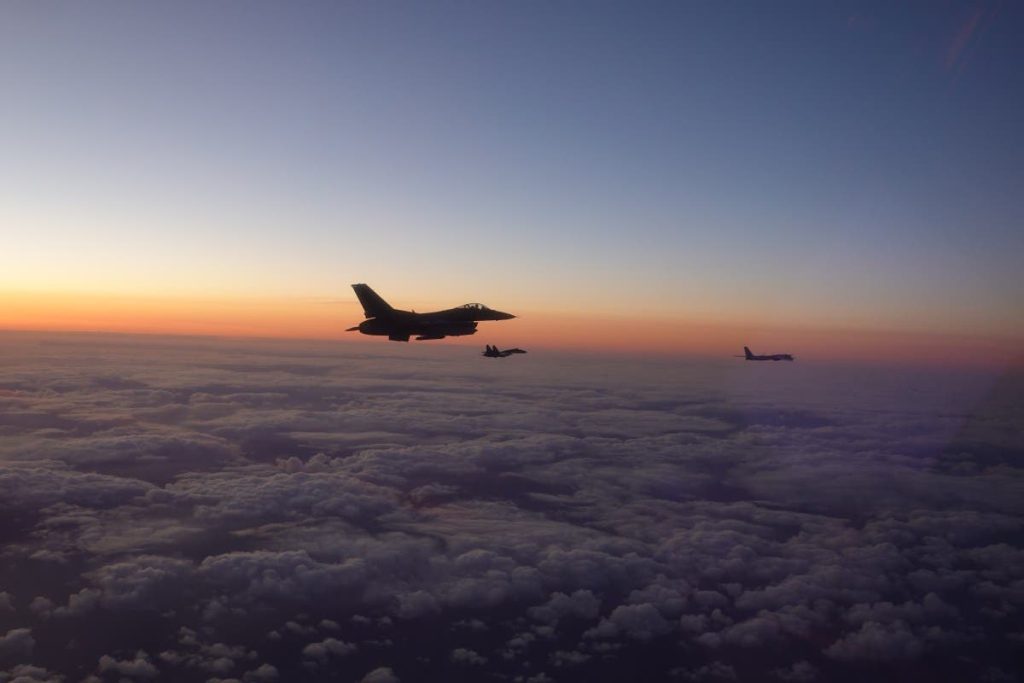NORAD Intercepts Russian Military Aircraft Near U.S. Airspace
In a routine yet significant demonstration of aerial vigilance, North American Aerospace Defense Command (NORAD) aircraft recently escorted Russian military planes that approached within 30 nautical miles of the U.S. mainland. The incident, which occurred on September 24, 2025, involved two Russian Tupolev Tu-95 strategic bombers and two Sukhoi Su-35 air defense fighters entering the Alaska Air Defense Identification Zone (ADIZ). NORAD responded by deploying an impressive array of aircraft: an E-3 Sentry surveillance plane, four F-16 Fighting Falcons, and four KC-135 aerial tankers. The remarkable images shared with Newsweek show an American F-16 flying alongside the Russian aircraft over the Bering Sea, capturing a moment of international tension played out in the skies. While the Russian aircraft remained in international airspace throughout their 53-minute flight in the ADIZ, the encounter highlights the ongoing cat-and-mouse game between major military powers in an increasingly complex geopolitical landscape.
This incident occurs against a backdrop of heightened tensions between NATO and Moscow, with several alliance members accusing Russia of more aggressive airspace violations elsewhere. Poland and Estonia have recently invoked Article 4 of NATO’s charter, requesting security consultations after perceived Russian provocations. Estonia specifically cited an incident where Russian MiG-31 aircraft allegedly entered its territory, interpreting it as a deliberate test of Western resolve. The Alaska ADIZ, while not sovereign U.S. airspace, represents a buffer zone beginning approximately 12 miles from the coast where aircraft are expected to identify themselves for security purposes. Though NORAD spokesperson Rebecca Garand characterized the September encounter as routine and not threatening, the frequency of such incidents—this being one of at least twelve similar flights in 2024 alone—suggests a pattern of Russian military activity designed to probe Western defensive responses and demonstrate Moscow’s operational reach.
The images from this encounter tell a compelling story of modern aerial standoffs—sleek American F-16s shadowing the distinctive profiles of Russian Tu-95 “Bear” bombers and Su-35 “Flanker” fighters against the vast backdrop of the Bering Sea. These moments of direct military interaction happen without the public’s knowledge most of the time, yet they represent critical points of contact between nations with historically tense relationships. The Tu-95 bomber, with its four distinctive contra-rotating propellers, is a Cold War-era platform that continues to serve as a visible symbol of Russian strategic power projection. When paired with the modern Su-35 fighters, these aircraft formations send a deliberate message about Russia’s continued investment in both legacy and cutting-edge military capabilities, particularly in regions where their presence will be noticed and documented by Western defense systems.
The frequency of these encounters deserves special attention. Prior to this September incident, Russian aircraft appeared in the Alaska ADIZ on August 26, when an Ilyushin Il-20 surveillance plane spent over two hours near the western Aleutian Islands. Additional incidents occurred in July, April, and February of the same year. This regular tempo of operations suggests these flights serve multiple purposes for Russia: gathering intelligence, testing response times, training crews in long-range operations, and maintaining a visible military presence near American territory. From NORAD’s perspective, each encounter provides valuable training opportunities for interception crews and tests the readiness of the complex detection and response systems designed to protect North American airspace. As NORAD stated, they remain “ready to employ a number of response options in defense of North America and meeting presence with presence”—a diplomatic way of saying they will continue matching Russian activities with appropriate countermeasures.
The context of these aerial encounters extends beyond bilateral U.S.-Russia relations. NATO members have reported an increase in Russian aircraft and drone activities near or within alliance airspace, contributing to a general atmosphere of vigilance and concern. The incident near Alaska occurred in a relatively remote region, but similar encounters over the Baltic and Black Seas often happen in more congested airspace, raising the stakes and potential for miscalculation. For local communities in Alaska, particularly on St. Lawrence Island, which was just 30 nautical miles from the Russian aircraft at their closest approach, these incidents represent a return to a familiar Cold War dynamic where remote Alaskan communities found themselves on the frontlines of superpower tensions. For these Americans, Russian military activities nearby are not abstract geopolitical chess moves but tangible reminders of their strategic location between global powers.
Looking ahead, these aerial encounters are likely to continue as part of the new normal in U.S.-Russia relations. NATO members remain on high alert, particularly those sharing borders with Russia or its allies. While NORAD officials characterize these interactions as routine, the military and diplomatic establishments of both countries understand the subtle messaging embedded in each flight path and aircraft selection. The images captured during these intercepts serve multiple audiences: they reassure the American public about vigilant defenses, demonstrate to allies the U.S. commitment to aerial sovereignty, signal to Russia that their movements are being monitored, and provide military analysts on both sides with valuable information about capabilities and procedures. As tensions between Russia and the West continue over Ukraine and other flashpoints, these moments of direct military interaction—professional, regulated, but inherently tense—will remain an important barometer of the broader relationship between former Cold War adversaries who continue to circle each other warily in the skies above the Arctic.


